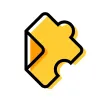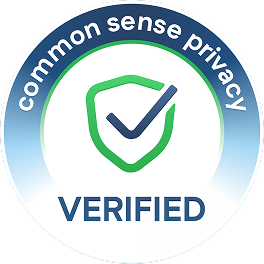Take a look inside 5 images
Edpuzzle
Pros: Intuitive design helps teachers and students add voice-overs, comments, resources, and quizzes to online videos.
Cons: Finding videos that suit your class can be daunting, especially with lots of redundant versions that show up in search results.
Bottom Line: As a tool for the flipped classroom or for student-led creation, a cool tool for teachers to create and share engaging video content.
Start by creating a free account on Edpuzzle and check out some of the existing videos to get a sense of how teachers are using it. Edpuzzle's search will suggest high-quality videos from sites such as YouTube, Khan Academy, TED Talks, and Vimeo. There's also the option to choose content from the curriculum library, which is a collection of videos organized by content area. Play around with the features to make sure that your edits stick; some videos can only be shared, not edited. And, of course, remember to preview all video content for appropriateness.
One way to get started with your own content creation is to use Edpuzzle for pre-teaching. Pair videos with texts and extra info to support students preparing for an activity or lesson. Use the voice-over feature to add a few quick checks to read-aloud videos to engage and support struggling readers, introducing vocabulary words along with pronunciation, definitions, and synonyms. For math centers, record yourself teaching a concept, and have students stop for practice and submit their answers. Want to flip your classroom? Let students use the tool to create a video lesson, and share some of the best creations for their peers to complete on their own. Then, go into depth in class to expand upon what students learned from remixing their videos.
Edpuzzle is a web-based tool for editing online videos and adding interactive content to target specific learning objectives. Teachers can upload their own videos, add URLs, or search the built-in content library (including YouTube videos and filters for Khan Academy, TED, National Geographic, and more). Videos can be customized with voice-over comments, embedded assessment questions, links, and more. Teachers can share videos with their students, assign due dates, and track their students' scores and progress over time as students watch videos and answer embedded assessments. Students can watch videos solo or via "live mode," where teachers can show a video as a group activity.
More recent AI features invite teachers to "automagically" generate questions to embed in online videos. The feature generates questions from the transcript of speech within the video or it pulls questions from other versions of the video that other teachers have created on the platform. The feature has limitations; it may not be able to generate questions if the video is very short, features limited speech, or if the video was uploaded to the platform before the Video Assist feature was developed.
Data from the embedded quizzes appears on the teacher's Edpuzzle dashboard, and there are straightforward features for exporting and incorporating that data into other grade- and course-management systems. Edpuzzle has built-in LMS integrations with Google Classroom, Canvas, Schoology, Moodle, PowerSchool, and more. Teachers can directly import their own videos from Screencastify, Explain Everything, and Google Drive. Teachers can opt to make their videos private, or they can share them so that other teachers using the tool can repurpose them. A frequently updated blog features tips and ideas for using video in the classroom, with parents, and for distance learning.
This is a handy tool for transforming video content that just about any classroom can use. Both teachers and students can customize online videos to prompt viewers to think critically, reflect, and respond. How much those viewers learn will depend, of course, on the original video and the quizzes or comments that you add, but there's enormous potential here for fostering a more learner-centric classroom experience. Creating informative, engaging videos can encourage students to be active viewers who critique what they watch. It's straightforward for teachers to upload their own videos, and there are tons of high-quality videos available (both from channels like Khan Academy and from other teachers) to use as stellar starting points.
While passively watching online videos may require only lower-level thinking skills, the ability to isolate and encourage interaction with the most important aspects of a video increases the relevance of content and depth of learning, especially if teachers take advantage of the options to add supplemental resources and links. Furthermore, critical thinking skills such as analysis and information seeking can lead students to a transformation of knowledge if teachers let students research, create, and share their own video lessons.
The main drawback is the volume of available content and the way it's organized. The search experience can be daunting. Many teachers have created and shared their own versions of the same videos, and it can be tough to wade through them all to find what you need. It's also worth considering the risks and rewards of using a tool filled with so much user-generated content: Be sure to take the time to fact check what you find, and know that your own videos could be used by other teachers and students long after you create them (unless you set your videos to private). The tool could also use more features for annotating and remixing videos, especially the ability to combine multiple videos. Since this feature isn't yet available, the developers suggest a workaround: sequencing video lessons to create a similar student learning experience.
















